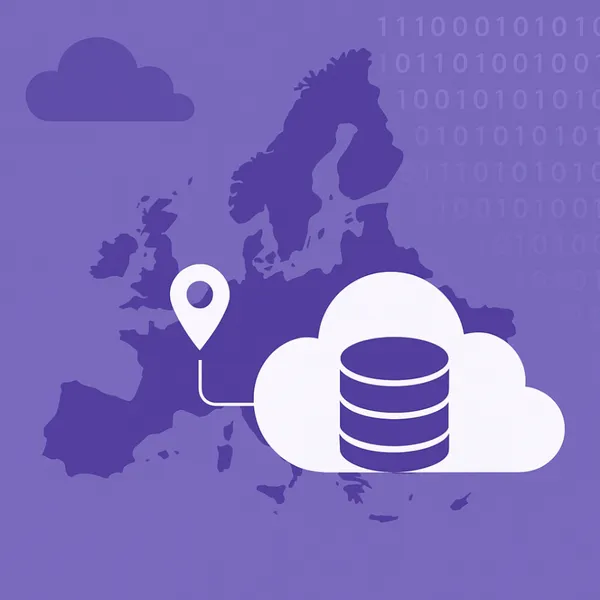
Knowledge base
January 17, 2025
Migrating Public Folders to Microsoft 365 and Shared Mailboxes
Migrating Public Folders to Microsoft 365 and shared mailboxes is an important step to improve collaboration and efficiency within your organization. In this blog, we will discuss the benefits, steps and points to consider for a successful migration. ✅
What are public folders?
Public folders are shared folders in Microsoft Exchange that organizations use to make information accessible to multiple users¹. These folders are designed to promote collaboration by making files, emails, calendars and notes centrally available. They are often used for:
- Shared access to company-specific information.
- Maintaining communication within teams.
- Organizing group calendars or contacts.
However, with the rise of modern collaboration tools such as Microsoft Teams and SharePoint, public folders are used less frequently. Migrating to a newer solution such as Exchange Online often offers benefits such as better security and flexibility.
Why migrate to Microsoft 365? 💼
While public folders have been useful for years, Microsoft 365 offers more modern options to better support teams. Here are some advantages:
- Enhanced collaboration: Microsoft 365 integrates seamlessly with Teams, Outlook and SharePoint for optimal workflow.
- Higher security: Microsoft 365 provides advanced tools to protect sensitive data.
- Usability: Modern features such as shared mailboxes and cloud storage improve data accessibility.
Steps for a successful migration 🛠️
Migrating public folders can be complex, but a structured approach will ensure a smooth transition:
- Inventory your data: Analyze what data is actively being used and what is obsolete. Archive old files to optimize migration.
- Establish a plan: Create a timeline that fits your organization and minimize downtime by performing migrations outside working hours.
- Preserve metadata: Ensure that rights, permissions and other properties are not lost during migration.
- Perform a test migration: Test the process to identify errors and omissions before going live.
Important points to consider when migrating 🔍|
During migration, there are a few points to pay extra attention to:
- Manage access rights: Check permissions and adjust as needed.
- Optimize your structure: Use the migration as an opportunity to reorganize and simplify your data.
- Communicate with your team: Inform users of the impact and benefits of the migration in a timely manner.
Benefits of Shared Mailboxes / Shared Mailboxes in Microsoft 365 📬
After migration, shared mailboxes can add great value:
- Easy collaboration: Team members have access to a shared inbox, enabling efficient email handling.
- Cost-saving: Shared mailboxes do not require an additional license.
- Organize emails smartly: Use rules and folders to keep an overview.
Most frequently asked questions about public folder migration
1. What are the biggest challenges in migrating public folders?
During migrations, data loss may occur due to:
- Outdated directory structures.
- Inconsistencies in permissions.
- Problems with large amounts of data.
It is important to conduct a thorough analysis and backup of critical data in advance.
2. Are there limits on public folders in Exchange Online?
Yes, Exchange Online has limits such as:
- A maximum size of 100GB per public folder.
- A total storage limit depending on Exchange Online subscriptions.
Check if your current folder structure is within these limits.
3. What tools are available for migration?
Microsoft offers several tools, such as:
- Exchange Admin Center for small migrations.
- PowerShell scripts for larger and complex migrations.
- Third-party tools for organizations with specific requirements.
4. What happens to permissions during migration?
Permissions are usually migrated, but may expire if the users or groups do not match the new environment. A detailed permissions audit is essential to avoid errors.
5. How do I ensure that users experience minimal interruptions?
- Schedule the migration outside business hours to minimize downtime.
- Communicate clearly about changes in access or use.
- Consider performing a test migration to resolve technical issues before the actual migration.
Conclusion 🎯
Migrating public folders to Microsoft 365 and shared mailboxes brings many benefits. With clear planning and attention to detail, you can make this transition successful. The result? More efficient, secure and future-proof collaboration within your organization.
Need help with your migration project? Contact us and find out what is possible within Microsoft 365. 💡
References
¹https://learn.microsoft.com/exchange/collaboration-exo/public-folders/public-folders
About the author
My name is Alta Martes, a specialist in Microsoft 365 and Google Workspace, with a focus on modern workplace management, cloud security and identity & access management. With years of experience, I help organizations optimize their IT infrastructure and create a secure, efficient digital workplace. 🎯 Need help with your Microsoft 365 strategy?
Click below and find out how we can support your organization:
Want to know more?

Related
blogs
Tech Updates: Microsoft 365, Azure, Cybersecurity & AI – Wekelijks in je Mailbox.



